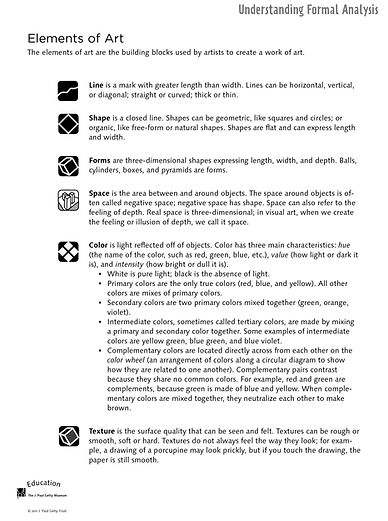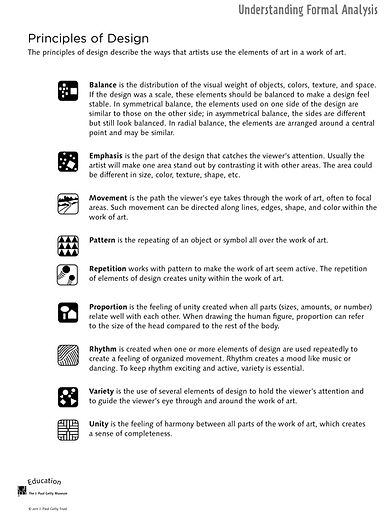Kuntz
AP Art History
AP
Welcome to the amazing world of AP Art History! Your summer work is listed here, along with instructions for various websites and resources you will be using, materials you will be creating for the first day of class. If you have any questions, please contact me:
Summer Assignment:
-
This link will take you to the 250 works and images you will be studying throughout the year. Refer to this list for resources and sites.
-
Become familiar with Khan Academy.
-
Visit one museum over the summer and document your visit. The link to the right will direct you to the exact assignment. There is a link to almost every museum in the Bay Area under the Study Menu drop down.
-
Look at the slide show below on Form, Function, Content, and Context. Become familiar with what these terms mean.


















10 Content Areas per College Board
UNITS EXAM WEIGHT
Unit 1: Global Prehistory, 30,000–500 BCE ~4% 11 works
Unit 2: Ancient Mediterranean, 3500 BCE–300 CE ~15% 36 works
Unit 3: Early Europe and Colonial Americas, 200–1750 CE ~21% 51 works
Unit 4: Later Europe and Americas, 1750–1980 CE ~21% 54 works
Unit 5: Indigenous Americas, 1000 BCE–1980 CE ~6% 14 works
Unit 6: Africa, 1100–1980 CE ~6% 14 works
Unit 7: West and Central Asia, 500 BCE–1980 CE ~4% 11 works
Unit 8: South, East, and Southeast Asia, 300 BCE–1980 CE ~8% 21 works
Unit 9: The Pacific, 700–1980 CE ~4% 11 works
Unit 10: Global Contemporary, 1980 CE to Present ~11% 27 works
The Elements of Art & The Principles of Design


How to research and where to begin?
You need to find information on a work of art. You start with the text only to discover the information is limited at best or, worst case scenario, the art is not in the book at all. You can’t always find what you need in books so now, more than likely, you'll go to the Internet. This section will show you how to avoid becoming overwhelmed, find what you need without wasting time, and judge whether what you find is credible.
Internet research tips:
1. Keep your request simple. Too many words in the search box will send sites that are too specifically connected with the College Board, like AP Pinterest pins, teachers' PowerPoints, or directly to the College Board website.
2. Begin with only one key term. Look for words and key words and phrases, alternate spellings, and other information that might suggest directions to broaden your serch.
3. Limit returns to .org, .edu, or .gov domains. Type site:.edu or site:.org after the search term.
4. Use quotation marks around long titles.
5. Stay away from image only .com sites. (Shutterstock, Flickr)
But what about using Wikipedia?
Wikipedia can be useful for finding BRIEF overviews, other sources and authorities to deepen your search, alternate spellings for source-finding, and, of course, images. The problem with Wikipedia is that it can't be used for anything that can't be verified in scholarly sources.
Website Evaluation:
1. Authority - check for an author with credentials.
2. Content - check for credible sources listed, citations used, and an intent to inform rather than market/propagandize. Are there misspellings and/or can readers edit the content?